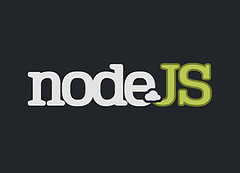練習一種語言或是 framework 最快的入門方式就是寫一個 todo list 了. 他包含了基本的 C.R.U.D. ( 新增, 讀取, 更新, 刪除 ). 這篇文章將用 node.js 裡最通用的 framework Express 架構 application 和 MongoDB 來儲存資料.
**更新**
Express 目前為 4.x,和下面教學的 3.x 不太一樣。我更新了在 Github 上的原始碼,你可以參考比較一下。
原始檔
請見 github | Download | Live Demo功能
- 無需登入, 用 cookie 來辨別每一問使用者
- 可以新增, 讀取, 更新, 刪除待辦事項( todo item )
安裝
開發環境
開始之前請確定你已經安裝了 node.js, Express 和 MongoDB, 如果沒有可以參考下列文章.
- How to setup a node.js development environment on Mac OSX Lion
- How to setup a node.js development environment on Ubuntu 11.04
- How to setup a node.js development environment on Windows
node.js 套件
參考文件 : npm basic commands
- 安裝 Express
$ npm install express@3.4.7 -g
這個練習裡我們用 Mongoose 這個 ORM. 為何會需要一個必須定義 schema 的 ORM 來操作一個 schema-less 的資料庫呢? 原因是在一般的網站資料結構的關聯, 驗證都是必須處理的問題. Mongoose 在這方面可以幫你省去很多功夫. 我們會在後面才看如何安裝.
步驟
用 Express 的 command line 工具幫我們生成一個 project 雛形
預設的 template engine 是 jade, 在這裡我們改用比較平易近人的 ejs.
$ express todo -e create : todo create : todo/package.json create : todo/app.js create : todo/public create : todo/public/javascripts create : todo/public/stylesheets create : todo/public/stylesheets/style.css create : todo/routes create : todo/routes/index.js create : todo/routes/user.js create : todo/public/images create : todo/views create : todo/views/index.ejs
在專案根目錄增加 .gitignore 檔案
.DS_Store node_modules *.sock
將 ejs-locals 以及 mongoose 加入 dependencies
Express 3.0 之後移除了 layout 和 partial support, 所以我們要增加 ejs-locals 這個套件才能有這些功能. 另外你也需要新增 layout.ejs 到 view 資料夾.
編輯 package.json
{
"name" : "todo",
"version" : "0.0.1",
"private" : true,
"dependencies" : {
"express" : "3.4.7",
"ejs" : "0.8.5",
"ejs-locals" : "1.0.2",
"mongoose" : "3.8.1"
}
}
安裝 dependencies
$ cd todo && npm install
Hello world
開啟 express server 然後打開瀏覽器瀏覽 127.0.0.1:3000 就會看到歡迎頁面.
$ node app.js
Project 檔案結構
todo |-- node_modules | |-- ejs | |-- ejs-locals | |-- express | `-- mongoose | |-- public | |-- images | |-- javascripts | `-- stylesheets | |-- style.css | |-- routes | `-- index.js | |-- views | |-- index.ejs | `-- layout.ejs | |-- .gitignore | |-- app.js | `-- package.json
-
node_modules
- 包含所有 project 相關套件.
-
public
- 包含所有靜態檔案.
-
routes
- 所有動作包含商業邏輯.
-
views
- 包含 action views, partials 還有 layouts.
-
app.js
- 包含設定, middlewares, 和 routes 的分配.
-
package.json
- 相關套件的設定檔.
MongoDB 以及 Mongoose 設定
在Ubuntu上 MongoDB 開機後便會自動開啟. 在Mac上你需要手動輸入下面的指令.
$ mongod
在根目錄下新增一個檔案叫做 db.js 來設定 MongoDB 和定義 schema.
var mongoose = require( 'mongoose' );
var Schema = mongoose.Schema;
var Todo = new Schema({
user_id : String,
content : String,
updated_at : Date
});
mongoose.model( 'Todo', Todo );
mongoose.connect( 'mongodb://localhost/express-todo' );
在 app.js 裡 require 他.
require( './db' );
移除 Express 產生用不到的 user route 還有加上 layout support.
// mongoose setup
require( './db' );
var express = require( 'express' );
var routes = require( './routes' );
var http = require( 'http' );
var path = require( 'path' );
var app = express();
var engine = require( 'ejs-locals' );
// all environments
app.set( 'port', process.env.PORT || 3001 );
app.engine( 'ejs', engine );
app.set( 'views', path.join( __dirname, 'views' ));
app.set( 'view engine', 'ejs' );
app.use( express.favicon());
app.use( express.logger( 'dev' ));
app.use( express.json());
app.use( express.urlencoded());
app.use( express.methodOverride());
app.use( app.router );
app.use( express.static( path.join( __dirname, 'public' )));
// development only
if ( 'development' == app.get( 'env' )) {
app.use( express.errorHandler());
}
app.get( '/', routes.index );
http.createServer( app ).listen( app.get( 'port' ), function(){
console.log( 'Express server listening on port ' + app.get( 'port' ));
} );
修改 project title
routes/index.js
exports.index = function ( req, res ){
res.render( 'index', { title : 'Express Todo Example' });
};
修改 index view
我們需要一個 text input 來新增待辦事項. 在這裡我們用POST form 來傳送資料. 另外別忘了設定 layout.
views/index.ejs
<% layout( 'layout' ) -%> <h1><%= title %></h1> <form action="/create" method="post" accept-charset="utf-8"> <input type="text" name="content" /> </form>
新增待辦事項以及存檔
routes/index.js首先先 require
mongoose 和 Todo model.
var mongoose = require( 'mongoose' ); var Todo = mongoose.model( 'Todo' );新增成功後將頁面導回首頁.
exports.create = function ( req, res ){
new Todo({
content : req.body.content,
updated_at : Date.now()
}).save( function( err, todo, count ){
res.redirect( '/' );
});
};
將這個新增的動作加到 routes 裡.
app.js
// 在 app.use( express.json()); 之前新增下列語法 app.use( express.bodyParser());
// 新增下列語法到 routes app.post( '/create', routes.create );
顯示待辦事項
routes/index.js
// 查詢資料庫來取得所有待辦是事項.
exports.index = function ( req, res ){
Todo.find( function ( err, todos, count ){
res.render( 'index', {
title : 'Express Todo Example',
todos : todos
});
});
};
views/index.ejs
// 在最下面跑迴圈來秀出所有待辦事項.
<% todos.forEach( function( todo ){ %>
<p><%= todo.content %></p>
<% }); %>
刪除待辦事項
在每一個待辦事項的旁邊加一個刪除的連結.routes/index.js
// 根据待辦事項的 id 来移除他
exports.destroy = function ( req, res ){
Todo.findById( req.params.id, function ( err, todo ){
todo.remove( function ( err, todo ){
res.redirect( '/' );
});
});
};
views/index.ejs
// 在迴圈裡加一個删除連結
<% todos.forEach( function ( todo ){ %>
<p>
<span>
<%= todo.content %>
</code>
<span>
<a href="/destroy/<%= todo._id %>" title="Delete this todo item">Delete</a>
</code>
</p>
<% }); %>
將這個刪除的動作加到 routes 裡.
app.js
// 新增下列語法到 routes app.get( '/destroy/:id', routes.destroy );
編輯待辦事項
當滑鼠點擊待辦事項時將他轉成一個 text input.routes/index.js
exports.edit = function ( req, res ){
Todo.find( function ( err, todos ){
res.render( 'edit', {
title : 'Express Todo Example',
todos : todos,
current : req.params.id
});
});
};
Edit view 基本上和 index view 差不多, 唯一的不同是在選取的那個待辦事項變成 text input.
views/edit.ejs
<% layout( 'layout' ) -%>
<h1><%= title %></h1>
<form action="/create" method="post" accept-charset="utf-8">
<input type="text" name="content" />
</form>
<% todos.forEach( function ( todo ){ %>
<p>
<span>
<% if( todo._id == current ){ %>
<form action="/update/<%= todo._id %>" method="post" accept-charset="utf-8">
<input type="text" name="content" value="<%= todo.content %>" />
</form>
<% }else{ %>
<a href="/edit/<%= todo._id %>" title="Update this todo item"><%= todo.content %></a>
<% } %>
</code>
<span>
<a href="/destroy/<%= todo._id %>" title="Delete this todo item">Delete</a>
</code>
</p>
<% }); %>
將待辦事項包在一個 link 裡, link 可以連到 edit 動作.
views/index.ejs
<% layout( 'layout' ) -%>
<h1><%= title %></h1>
<form action="/create" method="post" accept-charset="utf-8">
<input type="text" name="content" />
</form>
<% todos.forEach( function ( todo ){ %>
<p>
<span>
<a href="/edit/<%= todo._id %>" title="Update this todo item"><%= todo.content %></a>
</code>
<span>
<a href="/destroy/<%= todo._id %>" title="Delete this todo item">Delete</a>
</code>
</p>
<% }); %>
將這個編輯的動作加到 routes 裡.
app.js
// 新增下列語法到 routes app.get( '/edit/:id', routes.edit );
更新待辦事項
新增一個 update 動作來更新待辦事項.routes/index.js
// 結束後重新導回首頁
exports.update = function ( req, res ){
Todo.findById( req.params.id, function ( err, todo ){
todo.content = req.body.content;
todo.updated_at = Date.now();
todo.save( function ( err, todo, count ){
res.redirect( '/' );
});
});
};
將這個更新的動作加到 routes 裡.
app.js
// 新增下列語法到 routes app.post( '/update/:id', routes.update );
排序
現在待辦事項是最早產生的排最前面, 我們要將他改為最晚產生的放最前面.routes/index.js
exports.index = function ( req, res ){
Todo.
find().
sort( '-updated_at' ).
exec( function ( err, todos ){
res.render( 'index', {
title : 'Express Todo Example',
todos : todos
});
});
};
exports.edit = function ( req, res ){
Todo.
find().
sort( '-updated_at' ).
exec( function ( err, todos ){
res.render( 'edit', {
title : 'Express Todo Example',
todos : todos,
current : req.params.id
});
});
};
多重使用者
現在所有使用者看到的都是同一份資料. 意思就是說每一個人的 todo list 都長得一樣, 資料都有可能被其他人修改. 我們可以用 cookie 來記錄使用者資訊讓每個人有自己的 todo list. Express 已經有內建的 cookie, 只要在 app.js 新增一個 middleware 就好. 另外我們也會需要新增一個依據 cookie 來抓取當下的使用者的 middleware.
app.js
// mongoose setup
require( './db' );
var express = require( 'express' );
var routes = require( './routes' );
var http = require( 'http' );
var path = require( 'path' );
var app = express();
var engine = require( 'ejs-locals' );
// all environments
app.set( 'port', process.env.PORT || 3001 );
app.engine( 'ejs', engine );
app.set( 'views', path.join( __dirname, 'views' ));
app.set( 'view engine', 'ejs' );
app.use( express.favicon());
app.use( express.logger( 'dev' ));
app.use( express.cookieParser());
app.use( express.bodyParser());
app.use( express.json());
app.use( express.urlencoded());
app.use( express.methodOverride());
app.use( routes.current_user );
app.use( app.router );
app.use( express.static( path.join( __dirname, 'public' )));
// development only
if( 'development' == app.get( 'env' )){
app.use( express.errorHandler());
}
// Routes
app.get( '/', routes.index );
app.post( '/create', routes.create );
app.get( '/destroy/:id', routes.destroy );
app.get( '/edit/:id', routes.edit );
app.post( '/update/:id', routes.update );
http.createServer( app ).listen( app.get( 'port' ), function (){
console.log( 'Express server listening on port ' + app.get( 'port' ));
});
routes/index.js
var utils = require( '../utils' );
var mongoose = require( 'mongoose' );
var Todo = mongoose.model( 'Todo' );
exports.index = function ( req, res, next ){
var user_id = req.cookies ?
req.cookies.user_id : undefined;
Todo.
find({ user_id : user_id }).
sort( '-updated_at' ).
exec( function ( err, todos ){
if( err ) return next( err );
res.render( 'index', {
title : 'Express Todo Example',
todos : todos
});
});
};
exports.create = function ( req, res, next ){
new Todo({
user_id : req.cookies.user_id,
content : req.body.content,
updated_at : Date.now()
}).save( function ( err, todo, count ){
if( err ) return next( err );
res.redirect( '/' );
});
};
exports.destroy = function ( req, res, next ){
Todo.findById( req.params.id, function ( err, todo ){
var user_id = req.cookies ?
req.cookies.user_id : undefined;
if( todo.user_id !== req.cookies.user_id ){
return utils.forbidden( res );
}
todo.remove( function ( err, todo ){
if( err ) return next( err );
res.redirect( '/' );
});
});
};
exports.edit = function( req, res, next ){
var user_id = req.cookies ?
req.cookies.user_id : undefined;
Todo.
find({ user_id : user_id }).
sort( '-updated_at' ).
exec( function ( err, todos ){
if( err ) return next( err );
res.render( 'edit', {
title : 'Express Todo Example',
todos : todos,
current : req.params.id
});
});
};
exports.update = function( req, res, next ){
Todo.findById( req.params.id, function ( err, todo ){
var user_id = req.cookies ?
req.cookies.user_id : undefined;
if( todo.user_id !== user_id ){
return utils.forbidden( res );
}
todo.content = req.body.content;
todo.updated_at = Date.now();
todo.save( function ( err, todo, count ){
if( err ) return next( err );
res.redirect( '/' );
});
});
};
// ** 注意!! express 會將 cookie key 轉成小寫 **
exports.current_user = function ( req, res, next ){
var user_id = req.cookies ?
req.cookies.user_id : undefined;
if( !user_id ){
res.cookie( 'user_id', utils.uid( 32 ));
}
next();
};
Error handling
要處理錯誤我們需要新增 next 參數到每個 action 裡. 一旦錯誤發生遍將他傳給下一個 middleware 去處理.
routes/index.js
... function ( req, res, next ){
// ...
};
...( function( err, todo, count ){
if( err ) return next( err );
// ...
});
Run application
$ node app.js
到次為止我們已經完成了大部分的功能了. 原始碼裡有多加了一點 css 讓他看起來更美觀. 趕快開啟你的 server 來玩玩看吧 :)




